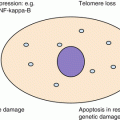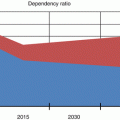Goal
Examples
Recover functional independence and return to community living
Rehabilitative stay following joint replacement, fracture, stroke, fall, infection, and cancer treatment
Strive for functional improvement and move to assisted living residence
Rehabilitative stay but with expectation of continued need for help with activities of daily living
Strive for functional improvement but expectation of limited success. If no improvement, elect to go home or residential setting with hospice
Ongoing medical issues such as cancer Uncertain prognosis
Improve overall well-being with meaningful activities in continued SNF residence
Engage in SNF activities, visit with family and friends, optimize function to the extent possible. Hospitalization is okay if needed
Further decline expected. Goals of care are focused on comfort. Death is not unexpected
Advanced dementia or other progressive illness. Prefer no hospitalization
Nearing the end of life. Goals of care are focused on comfort. Death is expected in weeks to months
End-of-life care being provided. Resident, family, and staff preparing for death
12.7 Regulations
US SNFs are extensively regulated in an effort to achieve high-quality care. The Omnibus Budget Reconciliation Act of 1987 requires periodic comprehensive assessment, sets minimum staffing metrics, and supports resident rights. The use of restraints and psychotropic medications is discouraged. The Society for Post-Acute and Long-Term Care Medicine (formerly known as the American Association of Medical Directors) is a medical professional organization focused on long-term care. The organization has been a leader in improving care in nursing homes and offers a certificate program for physician training. SNFs are inspected on a regular basis by state regulatory authorities.
12.8 Payment
US SNF expenditures exceed $120 billion per year, primarily financed by public health programs. Medicare payments predominantly cover post-acute short-term stays (up to 100 days) and account for approximately 14%. Medicaid programs cover most of the long-term stays, accounting for approximately 64%. The remaining stays are financed by private pay and long-term care insurance.
12.9 Resident Experience
The quality of life in SNFs remains a major issue. The medical model is a barrier to a homelike environment that promotes choice, purpose, and meaning in daily life. Concerns voiced by SNF residents include lack of autonomy and difficulty in forming appropriate relationships with others. Residents desire acceptance and adaptation, connectedness with others, homelike environment, and caring practices [10].
The rights of SNF residents have received affirmation in the last 20 years. US SNF residents have rights guaranteed under Federal and State law, including the right to exercise his or her own rights, be informed about rights and responsibilities, choose a physician and treatment, and participate in decisions and care planning. Privacy and confidentiality are protected. Provisions exist for residents to voice grievances and have the SNF respond in a timely manner. Resident Councils are convened on a monthly basis to air concerns and share information. A resident, even though determined to be incompetent, should be able to assert these rights based on the degree of capability. Each SNF has a designated ombudsperson responsible for resident advocacy, facility monitoring, and assistance with conflict resolution.
Safety is a major concern, and injurious falls are among the most common adverse events. Approximately half of SNF residents fall each year, and of those, a third need medical attention or must restrict their activities as a result. Exercise programs are effective to prevent falls [11]. A resident-centered multifactorial approach is recommended. Guidelines are available (American Geriatrics Society and British Geriatrics Society. Clinical Practice Guideline for the Prevention of Falls in Older Persons. New York: American Geriatrics Society; 2009 (www.americangeriatrics.org/). Resistance training exercises improve muscle strength and functional performance and should be incorporated [12].
SNFs must provide expert and timely medical care while optimizing the person-centered, homelike environment. Safety concerns arise in the treatment of conditions such as diabetes where risks of treatment are frequent (e.g., hypoglycemia from pharmacological treatment of diabetes) [13]. Conservative treatment approaches are recommended. Prompt recognition and treatment of acute medical changes are needed. Quality improvement efforts are aimed at early identification and management to improve health outcomes and care as well as reduce cost by avoiding unneeded hospitalizations. Tools and guidelines are available from professional organizations [14]. Decisions to hospitalize often depend on staffing levels and availability of diagnostic tests and laboratory support [15].
Residents may have low expectations for functional improvement and quality of life. Urinary incontinence, for example, is a geriatric syndrome present in 60–70% of SNF residents that is amenable to lifestyle interventions, behavioral therapy, and medications [16]. Resident perspectives however reflect low expectations for improvement, often believing that incontinence is inevitable and untreatable [17]. SNFs seek to provide a person-centered balance of care that allows the resident access to the best possible information and treatment while respecting the right of the resident to choose preferred avenues of care which may include refusing treatments.
12.10 Nursing Staff
Nurses and nursing assistants make up the majority of SNF staff and are major determinants of the resident’s experience. SNFs must have nurse staffing to meet the needs of residents as defined in their care plans. Although much studied, no consistent evidence has been found to determine the ideal relationship between SNF nurse staffing and quality of care [18]. Recruitment and retention of staff may be challenging. Turnover rates have been reported in the USA as >70% for nursing assistants and >50% for licensed staff including nursing directors. Education and cultural transformation are difficult when staff turnover is high.
12.11 Advance Care Planning Documentation
Advance care planning discussion is a process where information is shared and planning is accomplished between the physician and the resident (or health-care proxy). All SNF residents should have the opportunity to participate in advance care planning. The physician is responsible for documenting the discussion and writing orders that carry out the wishes of the resident. Assessment of the resident’s capacity to make decisions, designation of health-care proxy, and information about the resident’s values, goals, and life-sustaining treatment decisions should be documented in a part of the medical record that is easily accessible and updated (see Table 12.2).
Table 12.2
Advance care planning discussion
Domain | |
|---|---|
Decisional capacity | Capacity is decision-specific. Resident may have capacity around some questions, but not others. For example, resident may have capacity to designate a surrogate decision-maker but may lack capacity to make discharge decisions and plans due to impairments in memory, insight, and judgment. Capacity may be temporarily diminished, as in delirium |
Health-care proxy | Name, type of proxy (e.g., next of kin, durable power of attorney for health care, guardian), and contact information should be listed Back-up health-care proxies should be identified if possible |
Preferences for care | Describe the resident’s goals of care, values, preferences for treatment, and unwanted interventions. Use resident’s own words if possible. “I want to get better if I can, but I don’t want to be kept alive on machines.” “I don’t want to be a burden on my family.” “I have lived a good life, and I am not afraid of dying.” “I hate the hospital. I don’t want to go to the hospital again. Take care of me here in the nursing home as best you can. I understand I may not have long to live. I want to make the most of each day I have left” |
12.12 Advance Directives and Orders to Limit Care
Advance directives are written documents that provide direction for future medical decisions and health proxy. (See Advance Directives and Living Wills.)
When SNF residents set limits on unwanted treatments such as attempts at cardiopulmonary resuscitation or hospital transfer, orders to limit such treatments must be written by the physician. State-authorized orders to limit care are increasingly common in the USA. MOLST (medical orders regarding life-sustaining treatment) and POLST (physician orders regarding life-sustaining treatment) are frequently used and can be honored by emergency medical personnel during transport.
12.13 Dementia Care
Dementia is the most common condition in SNF with 50–70% of residents meeting the diagnostic criteria. A major challenge in the care of persons with dementia is the high prevalence of neuropsychiatric symptoms such as agitation and apathy [19]. Clear evidence-based guidance for dementia care has been lacking [20]; however therapeutic activities enhance emotional wellness, engage and support a sense of well-being, and reduce behavioral symptoms. Reminiscence therapy, art therapy, music therapy, exercise, and dance may be provided by informal caregivers or professionals. Person-centered care, communication skills, and modified dementia care mapping (detailed observations and scoring of residents are provided to staff to guide care), sensory therapy activities, and structured music therapies reduce agitation in residents with dementia [21]. Spending time outside in a garden appears to reduce agitation in dementia residents [22]. Caregiver support and education are among the most effective ways to improve quality of life among residents and caregivers as well as reduce behavioral symptoms. Increasing efforts (and regulatory incentives) are in force to reduce the use of antipsychotic medications for behavioral symptoms due to the increased mortality risk associated with all such medications [23].
SNF residents with primary progressive dementia often experience decreased ability to feed and lose weight as the disease advances. In the past, as many as a third of SNF residents had feeding tubes [24]. Data has shown that the use of feeding tubes in advanced dementia does not improve survival or decrease unwanted outcomes [25]. Potential harms from feeding tubes include the need for restraints to prevent residents from pulling them out, wound infections, and depriving residents of pleasure feeding. The best strategy is to conduct person-centered care planning and proceed in accordance with the resident and family’s preferences for care.
12.14 Medication Management
Polypharmacy is associated with an increased number of potentially inappropriate medications and increased adverse drug events, drug-drug interactions, hospitalizations, and increased costs. A pharmacist member of the IDT is associated with decreased costs [26].
12.15 Sexuality
The issue of SNF residents’ desire for sexual expression has garnered increased attention. Sexuality is a natural part of the human condition at any age. Some US states have laws to address conjugal rights in nursing homes, and the Australian government funded a sexual assessment tool with guidelines on how SNF staff should support the expression of sexuality. 53% of people 65–74 and 26% of those between 75 and 84 are sexually active [27]. Expressions of sexuality range from passing compliments and maintenance of physical appearance and attractiveness to sexual intercourse. Dementia residents present a particular challenge to SNF staff to balance concerns of safety with rights to sexual expression as the assessment of capacity to consent may present a quandary.
Stay updated, free articles. Join our Telegram channel

Full access? Get Clinical Tree





